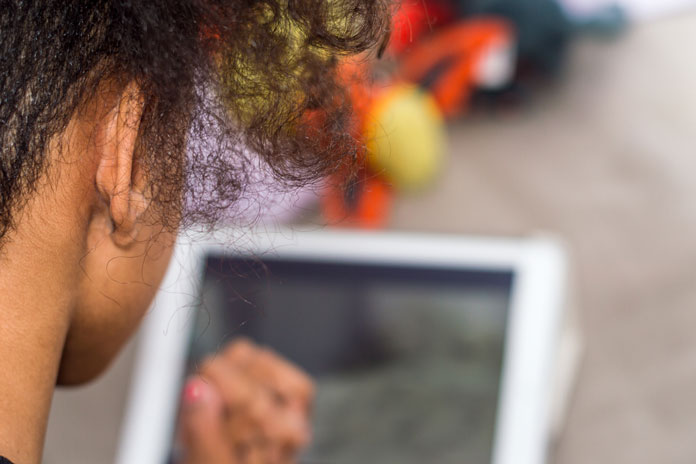Technology Programs at the Gateway School: PECS

So how does PECS using Augmentative and Alternative Communication systems help?
PECS is an approach to teaching social interaction by using easily understood symbols such as pictures. This allows nonverbal children to interact with anyone. PECS was first used with autistic preschool students but has since been successfully implemented with learners of all ages with various cognitive, physical, and communication challenges. PECS helps students by giving them a tool for functional communication that can be understood by anyone, even people who are unfamiliar with the student. It also helps students initiate communication and use multiple word utterances with increasingly sophisticated vocabulary.
PECS begins by teaching the student to give a single picture of a desired item or action to a partner who immediately honors the request. The PECS protocol goes through each of six phases to teach discrimination of pictures and how to put them together in sentences. In the more advanced phases, students are taught to use modifiers, answer questions, and add comments.
The six phases of PECS
PHASE I: How to Communicate
- Students exchange single pictures for items or activities that they really want.
PHASE II: Distance and Persistence
- Still using single pictures, students begin using them in different places, with different people, and across distances. They are also taught to be more persistent communicators.
PHASE III Picture Discrimination
- Students select from two or more pictures to ask for their favorite things. These are placed in their PECS Communication Book, a ringed binder with self-adhesive hook fastener strips where the students’ pictures are stored for communication.
PHASE IV: Sentence Structure
- Students construct simple sentences on a detachable Sentence Strip using an “I want” picture followed by a picture of the item being requested. They also learn to expand their sentences by adding more sophisticated vocabulary, including adjectives, verbs, and prepositions.
PHASE V: Responsive Requesting
- Students use PECS to answer questions such as, “What do you want?”
PHASE VI: Commenting
- Students comment in response to questions such as, “What do you see?”, “What do you hear?” and, “What is it?” They learn to make up sentences starting with “I see”, “I hear”, “I feel”, “It is a”, etc.
Did you know?
The PECS teaching protocol is based on B.F. Skinner’s book, Verbal Behavior, and broad spectrum applied behavior analysis. To avoid prompt dependency, teachers do not use verbal prompts, but they use specific prompting and reinforcement strategies that will lead to independent communication throughout the protocol. The protocol also includes systematic error correction procedures to promote learning. According to the PECS website, there are more than 150 research articles from all over the world supporting the effectiveness of PECS as an evidence-based practice.
Though the primary goal of PECS is to teach functional communication, some students using PECS will also develop speech or transition to a speech generating device (SGD). Our hope is that all students, regardless of their verbal ability and challenges, will be able to communicate their own wants and needs.
Request a Tour of The Gateway School

Since 1980, RKS Associates has been a leader in providing the needs of special education students and helping children grow to their fullest potential. Each of our schools seeks to empower each student with skills for life, work, and recreation; we believe that every individual possesses the dignity and potential to contribute to a better world.
As part of the RKS Associates Network of schools in New Jersey, the goal at the Gateway School is to assist all students in becoming as independent as possible and help them get ready for the future. Located in Carteret, NJ, we serve individuals throughout Central and Northern New Jersey. Contact us at our main office at 732.541.4400 with any questions or schedule a private tour of the Gateway School today.
Chris Hoye, Principal-The Gateway School of Carteret, NJ


